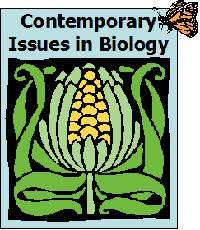
Week 14, Chapter 11 -- Digging Deeper Sample Answer
Course home | Weekly schedule | Announcements | Instructor Info | Desire2Learn | MasteringBiology® | Honor Code | FAQs | HELP!
 |
Week 14, Chapter 11 -- Digging Deeper Sample AnswerCourse home | Weekly schedule | Announcements | Instructor Info | Desire2Learn | MasteringBiology® | Honor Code | FAQs | HELP! |
The only thing most Americans know about measles is that it is a dead disease in the United States and that the measles vaccine is a part of the required MMR vaccines given to children here. Though it is true that measles (and certainly death from this disease) is virtually eliminated from the U.S., labs at the Centers for Disease Control (CDC) continue to test for measles. In addition, the CDC website has links to information on measles from the World Health Organization (WHO). The WHO has hundreds of labs around the world monitoring measles cases (World Health Organization, 2006). Why would the CDC, an American organization, care about measles outbreaks among its citizens? What is the chance that this disease could return to our soils and pose a serious threat? Measles is caused by a virus, and it kills approximately one-million children world-wide each year, either as a primary infection (it is a respiratory disease) or because of secondary infections that follow measles. In addition, effects from this disease make it the number one cause of blindness in African children (National Center for Immunization and Respiratory Diseases, 2008).
The measles virus is a fairly simple pathogen that can change quickly--that is, a population of the measles virus may adapt to surroundings or immunizations within a few generations. Since medicines and the immune system kill off the weak viruses, the strong ones are left to reproduce in a few infected individuals. This stronger strain then spreads. Measles is highly contagious, and it may be immune to medicines that were effective in the past. Because of this natural selection, measles has the potential, just like influenza or HIV, to continue to be a threat to human health as we track its adaptations in our environment.
So far in the U.S., the MMR vaccine has kept measles at bay. Around the world, though, labs continue to track the different genotypes of the measles virus as new strains evolve. Though the overall death count from measles dropped dramatically from the year 2000 to 2006, a large outbreak in the Ukraine and Romania caused the European death toll to rise (Centers for Disease Control and Prevention, 2007). Due to increased travel of Americans to Europe over the past couple of years, this new strain's ability to bypass normal human immune response, and our feeling of invincibility towards this "dead" disease, Americans could be at risk of an outbreak of measles. To prevent this, the CDC should continue to ally themselves with the European laboratories already tracking the evolution of this viral strain. In addition, funding should be routed to labs here in the U.S. to continue working on a new vaccine for this new strain. Finally, the American people and their doctors should be aware of the return of measles, so they can properly identify it and treat it before serious sickness, mental retardation (in unborn children), or even death occurs.
[494 words]
References:
[Back to Digging Deeper assignment]
[Sample assignment by Mark Walvoord]